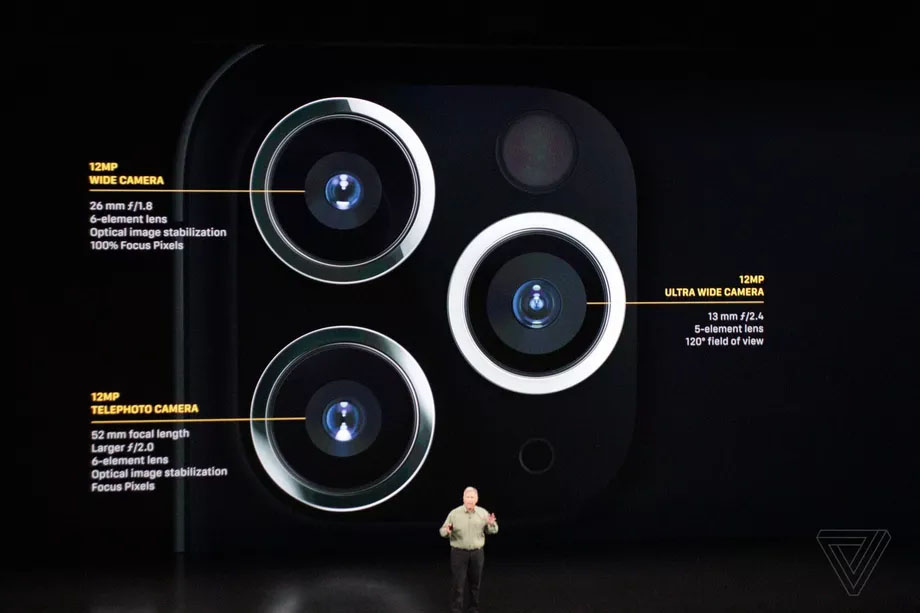
I just spent some time with Apple’s new iPhone 11, the successor to the company’s popular iPhone XR. It’s arriving on September 20th, priced at $699. While the iPhone 11 looks visually identical to the iPhone XR from the front, it’s the rear of the device that’s really changing this year.
Apple is adding a dual-camera system with an additional 12-megapixel ultra-wide camera that lets you pull back to a 5x field of view so you can see more in the frame. Those cameras aren’t in a separate camera bump anymore. Instead, the rear glass of the phone now incorporates the camera modules. It’s still a camera bump, but it’s all a single piece of glass now. It’s quite striking, especially on the white model.
:no_upscale()/cdn.vox-cdn.com/uploads/chorus_asset/file/19187348/iphone11DSC_5400.jpg?w=980&ssl=1)
:no_upscale()/cdn.vox-cdn.com/uploads/chorus_asset/file/19187345/iphone11DSC_5396.jpg?w=980&ssl=1)
:no_upscale()/cdn.vox-cdn.com/uploads/chorus_asset/file/19187349/iphone11DSC_5332.jpg?w=980&ssl=1)
This camera system includes a new software interface for both of these cameras that lets you see outside the frame, so you can see the details of the photos you’re taking with the ultra-wide camera. You can also hold down the shutter button to immediately start taking a video. (Don’t despair, you can still take burst photos by sliding the shutter to the left. It’s a neat little interface idea.) The front-facing camera is also getting an upgrade, to a 12-megapixel TrueDepth wide-angle camera that supports slow-mo capture for what Apple calls “slofies.”
The camera changes are the big news this year, but you’ll also be able to pick from new color options: purple, white, green, yellow, black, and red are all available. Apple is also improving the battery life by an hour this year, thanks to the latest A13 Bionic processor inside.
:no_upscale()/cdn.vox-cdn.com/uploads/chorus_asset/file/19187358/iphone11DSC_5363.jpg?w=980&ssl=1)
Apart from the additional camera, the upgraded processor, and the slight increase to battery life, the iPhone 11 is extremely familiar if you’ve spent time with the iPhone XR. The 6.1-inch LCD display is under slightly stronger glass now, but it’s still an excellent Apple LCD, not an OLED. The Face ID module works a little faster and at a slightly wider angle now. It’s very hard to judge processor improvements in a demo setting, but the A12 Bionic in the XR already had so much headroom that it’s hard to see how that will be a noticeable improvement for the target market here in the near term.
Apple will start shipping the iPhone 11 on September 20th. Apart from the color options, you’ll also be able to pick from different levels of device storage. 64GB models are $699, with 128GB at $749, and the largest version is $849 for 256GB of storage.
We’re going back to collect some more time with the iPhone 11 and shoot a video, so stay tuned. And of course, we’ll be reviewing this phone as soon as we can.
Source: The Verge


:no_upscale()/cdn.vox-cdn.com/uploads/chorus_asset/file/19187037/lcimg_b67bc97d_c9cd_4619_9c8b_86a310c96a01.jpg?w=980&ssl=1)
:no_upscale()/cdn.vox-cdn.com/uploads/chorus_asset/file/19187103/Screen_Shot_2019_09_10_at_12.57.44_PM_copy.png?w=980&ssl=1)
:no_upscale()/cdn.vox-cdn.com/uploads/chorus_asset/file/19187169/lcimg_2ce10f57_d775_4936_9349_aa679623a753.jpg?w=980&ssl=1)
:no_upscale()/cdn.vox-cdn.com/uploads/chorus_asset/file/19187232/Screen_Shot_2019_09_10_at_2.36.05_PM.png?w=980&ssl=1)
:no_upscale()/cdn.vox-cdn.com/uploads/chorus_asset/file/19187275/lcimg_e39768f8_e95b_4100_b3e7_e2b009bc429d.jpg?w=980&ssl=1)